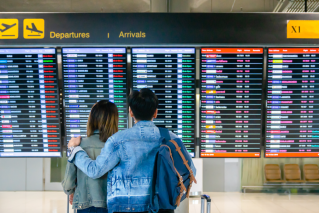Fasten seat belts tighter than ever! Climate change is making flights a lot bumpier


Turbulence is becoming more frequent thanks to climate change. Photo: Getty
Flying is going to get a lot bumpier thanks to climate change, researchers have found.
In a recently published study it was determined that hazardous clear air turbulence has increased up to 55 per cent from 1979 to 2020.
Meteorologist at the University of Reading and co-author of the report Mark Prosser and his colleagues analysed 40 years of atmospheric data and calculated the clear-air turbulence in 21 different ways over those 40 years.
This gave the researchers a detailed picture of how turbulence changed as the climate changed, especially over the North Atlantic, where the biggest shifts were observed.
“The researchers found severe clear-air turbulence increased from 17.7 hours in 1979 to 27.4 hours in 2020, or 55 per cent for an average point over the North Atlantic,” a press release related to the study said.
“Moderate turbulence there increased by 37 per cent, from 70.0 to 96.1 hours, and light turbulence increased by 17 per cent, from 466.5 to 546.8 hours.”
Flight routes over the United States, Europe, the Middle East and the South Atlantic also saw significant increases in turbulence.
Tweet from @JoeJustice0
Clear-air turbulence is invisible, unlike other turbulence which is associated with storms and can be identified via radar imagery and other sensing tools used for aviation.
As clear-air turbulence is invisible, it can be particularly hazardous.
“It’s also challenging to predict because it is created by small-scale eddies that are too localised for most weather models to explicitly calculate,” the press release said.
Researchers believe clear-air turbulence can only become more frequent as climate change grows more intense.
Across the globe, warmer air caused by greenhouse gas emissions increases wind shear in jet streams, which strengthens clear-air turbulence, the press release explained.
Better forecasting needed
“Following a decade of research showing that climate change will increase clear-air turbulence in the future, we now have evidence suggesting that the increase has already begun,” said study co-author Paul Williams, an atmospheric scientist at the University of Reading.
“We should be investing in improved turbulence forecasting and detection systems to prevent the rougher air from translating into bumpier flights in the coming decades.”
Not only can turbulence be scary, and occasionally dangerous, for passengers. it already costs the airline industry a lot of money.
“Airlines will need to start thinking about how they will manage the increased turbulence, as it costs the industry $150 to $500 million annually in the United States alone,” Mr Prosser said.
“Every additional minute spent travelling through turbulence increases wear and tear on the aircraft, as well as the risk of injuries to passengers and flight attendants.”








